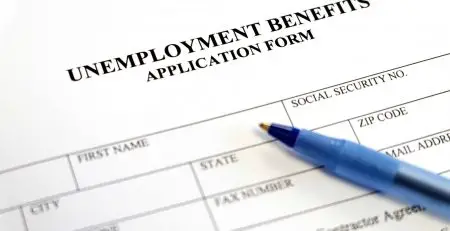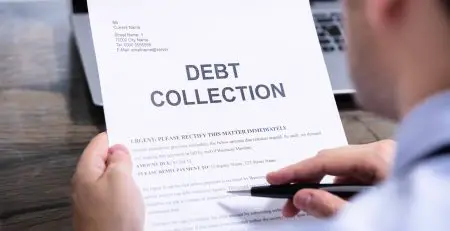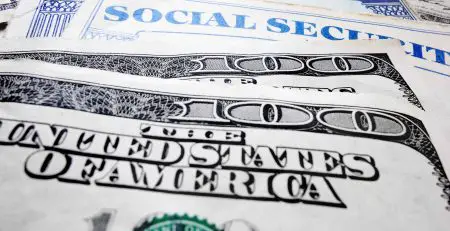When your mind wanders towards food, it might make you more anxious than you think. This is because everyone knows that food is so important and you cannot survive without it. But, the truth is that there are many households across the United States that struggle to afford food expenses and groceries. It could be even more challenging for people who have more mouths to feed. But, the Federal Government is aware that there are many American households that suffer with this issue. This is why they created assistance programs that may be able to provide assistance. One of these programs is The Emergency Food Assistance Program (TEFAP).
This article will tell you everything you need to know about this food assistance program and how you can qualify for it. Additionally, this article will tell you about other assistance programs that can help you and your family.
What is The Emergency Food Assistance Program (TEFAP)?
The Emergency Food Assistance Program is a welfare program that can provide assistance for struggling American households across the United States. You will find that this federal program provides support to qualifying individuals through supplemental diets. Qualifying individuals include low-income American households, seniors, and more. These American households can receive emergency food assistance without any cost. Yes, that’s right! You will find that it is completely free! The United States Department of Agriculture (USDA) provides USDA Foods that are 100% nutritious. Additionally, state governments receive administrative funding to operate this program. When the Federal Government supplies these resources to state governments, they are responsible for distributing these resources to state agencies. But, the absolute best thing about this program is that the USDA offers high-quality, and nutritious meals.
You should keep in mind that the states differ in the amount of assistance they receive. The main factor that determines how much food they get is how many unemployed workers and other eligible individuals remain in the state. Additionally, the states that do receive assistance offer the food to local agencies. These agencies include Indian Tribal Organizations, and food banks. Then, these state agencies distribute these resources to local organizations, such as food pantries, soup kitchens, etc. These organizations are responsible for providing assistance to qualifying individuals and helping the public. But, every state government has a different structure and administration, in regards to the program. As an example, a state could offer resources to community agents and these agents provide food to eligible households directly.
What Will You Gain From The Emergency Food Assistance Program?
Now, you know how The Emergency Food Assistance Program works. But, it can still be a little confusing. TEFAP is a federal assistance option that provides food and money to state governments that take part in the program. These state governments then offer these resources to distribute to struggling American households. As an example, let’s say the Federal Government provides food to a local food bank. This local food bank operates with a food pantry that delivers these meals to struggling Americans.
These local organizations can offer the food they got through TEFAP to distribute to struggling people in soup kitchens or in food pantries. When local organizations get these resources, individuals in the community can gain a lot. They will be getting free food from these places! If your local organization offers food they get from this assistance program, then you are definitely benefiting from TEFAP. That means that you could figure out if there are any local food organizations such as soup kitchens or food pantries that can provide assistance for people like you to receive food assistance.
Other Food Assistance Options That Can Help You and Your Family
Besides The Emergency Food Assistance Program, there are other federal welfare options that can provide relief for qualifying people to help manage food and groceries expenses. These programs include:
- Supplemental Nutrition Assistance Program (SNAP)
- Special Supplemental Nutrition Program for Women, Infants, and Children (WIC)
- National School Lunch Program (NSLP)
- School Breakfast Program (SBP)
Supplemental Nutrition Assistance Program (SNAP)
The Supplemental Nutrition Assistance Program (SNAP) is a popular assistance option for struggling Americans that need relief. SNAP, which is often referred to as food stamps, provides relief to struggling Americans through an Electronic Benefits Transfer (EBT) card. An EBT card will send over money to you each month you receive these benefits. But, you can only use these payments at stores that approve of these EBTs as a form of payment. You can use these funds to pay for food expenses and grocery costs. But, you should know that you cannot buy everything from a grocery store through the EBTs. You are allowed to buy groceries such as:
- Dairy products
- Bread
- Vegetables
- Fruits
- Meat
- Poultry
- Fish
- Cereal
- Snack foods
- Non-alcoholic beverages
- Seeds and/or plants that produce food for the household to eat
But, there are still a wide range of groceries that the funds from this program cannot purchase, such as:
- Alcoholic beverages like beer, wine, liquor
- Tobacco products like cigarettes
- Vitamins
- Medicines
- Supplements
- Live animals (except shellfish, fish removed from water, and animals slaughtered before store pick-up)
- Non-food items
How Much Could You Receive As Benefits From SNAP?
You should remember that each state varies in administration when it comes to this assistance option. This means that there will be different eligibility requirements that you need to meet, in order to qualify for the program. If you do qualify, then the amount of assistance that you can get depends on different factors. These factors include: family size, income level, and so one. The United States Department of Agriculture offers a chart that presents the maximum amount you can receive each month from this program. But, you need to keep in mind that the information for Oct. 1, 2023, through Sept. 30, 2024 can differ for special circumstances.
- 1 Person: The maximum amount is $291
- 2 People: The maximum amount is $535
- 3 People: The maximum amount is $766
- 4 People: The maximum amount is $973
- 5 People: The maximum amount is $1,155
- 6 People: The maximum amount is $1,386
- 7 People: The maximum amount is $1,532
- 8 People: The maximum amount is $1,751
- For each additional individual after 8 people: $219
Special Supplemental Nutrition Program for Women, Infants, and Children (WIC)
Naturally, there are some groups of people who need more help than others. That is why the Special Supplemental Nutrition Program for Women, Infants, and Children (WIC) was created. This federal assistance program can provide support to families through federal grants to state governments. These federal grants can be used for supplemental food assistance, health care referrals, and nutrition educational opportunities for eligible pregnant women, postpartum women, infants, and children up to the age of 5 that face nutrition risk.
What are the Eligibility Requirements To Qualify For The WIC Program?
If you are interested in receiving relief from this assistance option, then you will need to meet different eligibility requirements to qualify. This includes:
- Nutrition Risk Requirements
- Residential Requirements
- Wages and Income Requirements
- Categorical Requirements
The WIC Program is a federal assistance option. But, state governments are responsible for providing relief. You will need to contact your local or state WIC agency for more information. They can provide help with the application process and answer all of your questions about this program!
But, you need to remember that this assistance program is a short-term solution to your problem. This means that qualifying individuals can only receive relief for one or more certification periods. A certification period is the amount of time you can get benefits. But, it depends on the application and the state you live in. This means that you need to confirm with your state. Additionally, it is important to remember that there might be a waiting list before you get your benefits, like other federal welfare programs. The program could place you on a waitlist, in the case that there are too many people to help but not enough funds.
National School Lunch Program
Public schools, nonprofit schools, and residential child care facilities can gain a lot from this food assistance option. This federal program provides balanced lunches at a reduced or no cost to eligible students for every school day. There are millions of children who are able to gain from this program every year. If children received lunches from school at a discounted or even free cost, then their families will save a chunk of change. This would make a huge difference for households that are dealing with financial struggle. This program is old and was actually signed into law back in 1946. But, it’s still operating today!
Other Federal Welfare Programs That Are Not Relevant To Food Assistance
Other than food assistance options, you can find other federal assistance programs that can support people to have a more affordable standard of living. These assistance programs can offer relief for housing expenses, healthcare costs, and many more. If you have more support in certain aspects of your life, then you might be able to better manage other areas of life. As an example, if a person can use less funds on housing costs, then those funds can be utilized to purchase food instead! There are some federal assistance options that are non-food related that could be worth your time and effort to invest in. This includes:
- Low Income Home Energy Assistance Program (LIHEAP)
- Housing Choice Voucher Program
- Public Housing
- Weatherization Assistance Program (WAP)
- Medicare
- Medicaid
- Supplemental Security Income (SSI)
- Social Security Disability Income (SSDI)
- Children’s Health Insurance Program (CHIP)
In Conclusion
The Emergency Food Assistance Program is a great assistance option that offers relief to local organizations to help their cause. This program provides food for struggling American households and individuals. But, this program cannot directly help those who need it, unlike other programs. You can find both federal assistance programs that provide food assistance and other assistance components. But, you need to review your options when you are looking to find help. Fortunately, the application process and forms for these programs are free of charge! But, if you find yourself in a pickle, then you can always contact your state agency. You will find that they will be a great help and remain by your side throughout every step of the process.












